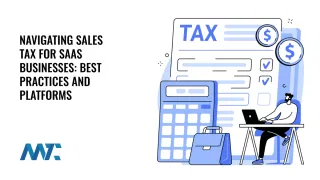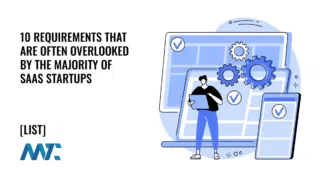The Software Industry at 25: Smarter, Faster, and More Fragile Than Ever

Yesterday’s AWS outage, which slowed or stopped nearly a third of the internet for hours, was a reminder of a truth we don’t like to admit: the modern software industry isn’t built on resilience. It’s built on trust… trust that a handful of cloud providers will stay online, that our integrations will hold, and that the AI writing our code won’t break what we can’t see.
Two decades after the dot-com collapse and the rise of Web 2.0, we’ve entered a new phase where software doesn’t just power business; it is business. SaaS is the default. AI writes code, tests it, deploys it, and even monitors it. And yet, despite all this sophistication, the industry is more fragile than ever.
The Centralized Cloud: Convenience with a Cost
When cloud computing first took off, it promised infinite scalability, reduced costs, and freedom from on-premise infrastructure. What it also created, slowly and quietly, was a massive dependency problem.
A handful of hyperscale providers now carry the digital world on their backs. AWS, Microsoft Azure, and Google Cloud host the majority of enterprise software, data, and AI infrastructure. When one of them falters, the ripple spreads instantly. A DNS misconfiguration at AWS can take down banking apps, commerce platforms, and entire marketing automation systems in minutes.
It’s a single point of failure that spans continents.
SaaS was supposed to distribute risk. Instead, it concentrated it. Vendors host backups on the same cloud they depend on. Redundancy is theoretical, not physical. Failover plans rely on the same DNS infrastructure that triggered the outage. We’ve designed a system so streamlined it has no slack, and therefore no safety.
The Age of AI-Developed Code
Artificial intelligence has revolutionized software development. Tools like GitHub Copilot, Replit, and Amazon Q now write, test, and deploy production code in seconds. Entire pipelines can be spun up automatically. AI agents build integrations, patch vulnerabilities, and optimize cloud costs—all without human oversight.
This has created what might be called the acceleration trap. Development velocity has never been higher, but comprehension hasn’t kept pace. When AI writes code built on infrastructure it didn’t design, dependencies multiply invisibly. Each abstraction hides another layer of risk.
A single AI-generated (GenAI) bug can now ripple across thousands of deployments before anyone notices. Automation magnifies fragility as much as it magnifies productivity.
The irony is that we finally have the tools to build software faster than ever—but we may have also built a system that’s faster than we can safely control.
The Persistent Fallacy of the Software Purchase
Despite all our progress, software buying is still a leap of faith. Demos and free trials can’t replicate real-world conditions. No two implementations behave the same. Integration, data quality, and user behavior twist software into new shapes once deployed.
And too often, the people buying it aren’t the ones who will use it. Procurement still favors compliance, pricing, and vendor reputation over user experience or adaptability. The result is predictable: frustration after rollout and endless post-sale fixes.
Even in the age of AI-driven personalization, we still haven’t learned to evaluate software by how well it fits the people using it.
The View from the Software Company
On the other side of the equation, software companies now live in a state of continuous deployment. SaaS eliminated version numbers. AI eliminated release cycles. Every platform update is a living experiment that affects thousands of customers in real time.
The stakes have never been higher. What matters most now isn’t feature count—it’s reliability, transparency, and trust.
- Delivering outcomes: Features don’t sell; results do. Customers care less about dashboards and more about impact—efficiency gained, costs saved, decisions accelerated. AI can generate code, but humans still define success.
- Selling and renewing: Subscription economics demand honesty. Customers can cancel faster than they can complain. Uptime, communication, and incident response are as critical to retention as product innovation.
- Integrating—and isolating: APIs, SDKs, and AI pipelines connect everything, but they also create dependencies that can lead to chain collapses. True resilience comes from decoupling systems that can fail independently, not collectively.
- Securing and governing: Security no longer ends at encryption. It extends to understanding who—or what—wrote the code running in production. As AI development scales, traceability and auditability will define trustworthy software.
- Building resilience: Redundancy and multi-region deployment must become non-negotiable. A second cloud provider isn’t a waste; it’s insurance. The next outage won’t ask whether you planned for it.
Growing Up Without Growing Complacent
The AWS outage wasn’t an isolated event; it was a symptom of a larger issue. The software industry has grown powerful but not wise. We’ve optimized for efficiency over redundancy, velocity over verification, automation over accountability.
AI will continue to accelerate everything: innovation, deployment, and failure alike. The question is whether the industry can mature fast enough to balance speed with stewardship.
The next evolution of software won’t come from smarter code. It will come from more responsible architecture; systems designed not just to perform brilliantly when everything works, but to degrade gracefully when it doesn’t.
We’ve built a digital economy on infrastructure we don’t fully control, written by systems we don’t fully understand. To survive the next decade, the industry must rediscover the fundamentals: redundancy, transparency, and human judgment.
Because in a world where AI can write, ship, and crash software at scale, resilience isn’t an engineering detail… It’s the only feature that matters.







